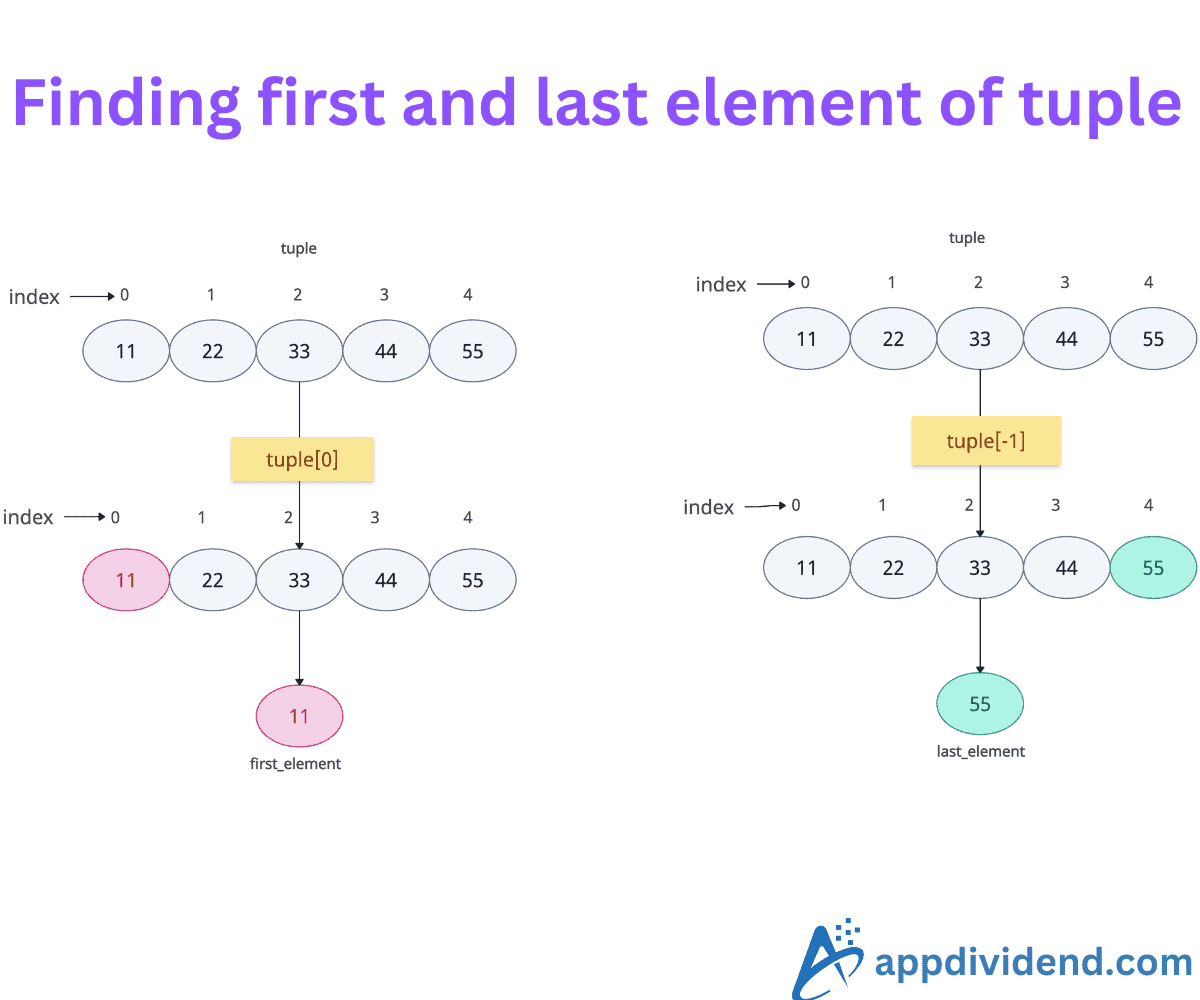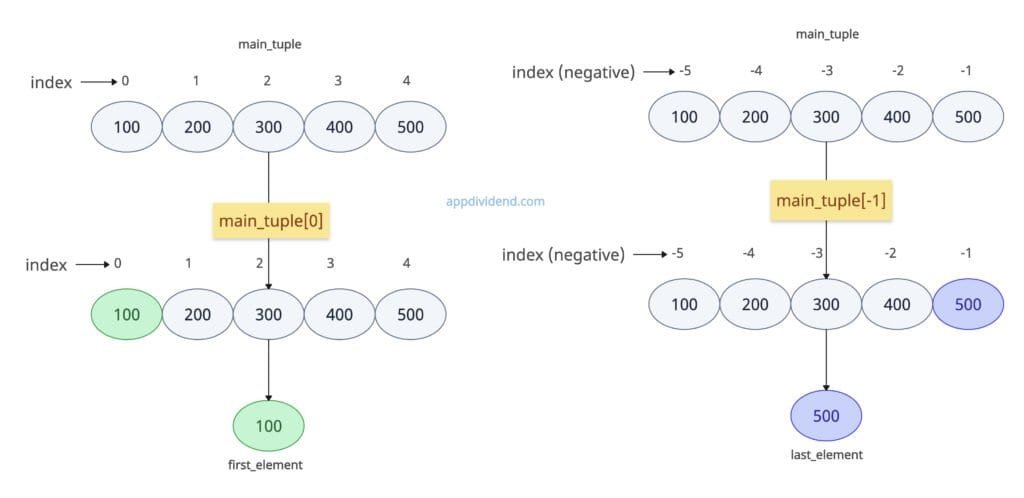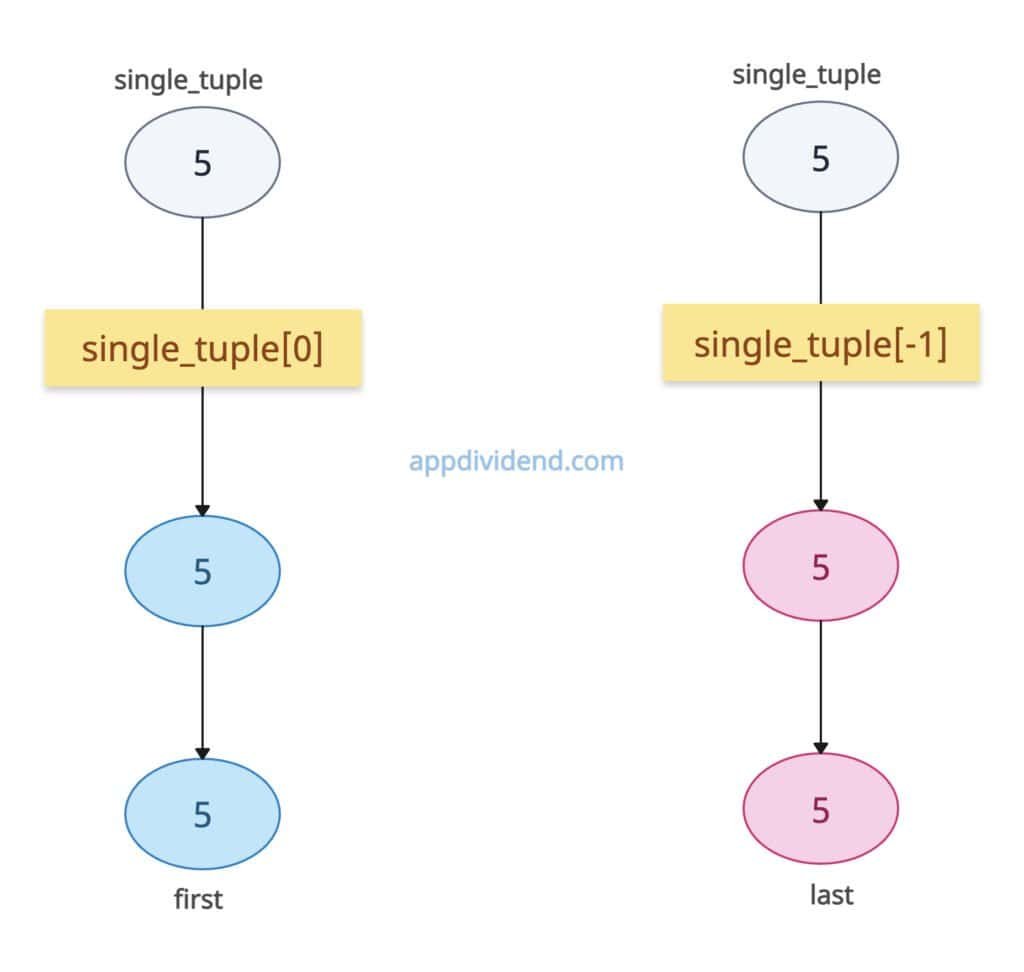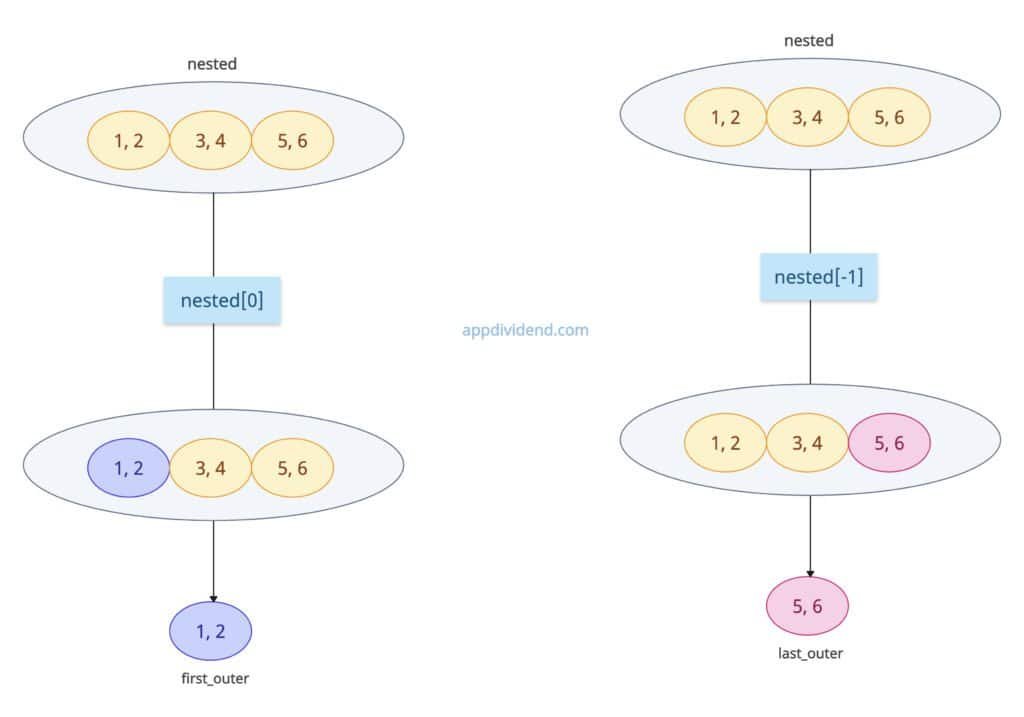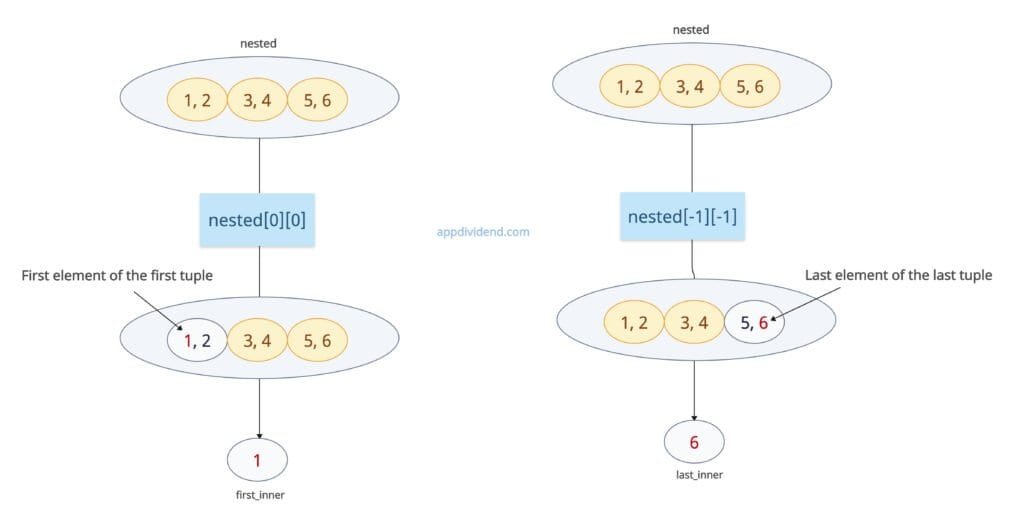The most efficient and robust way to get the first and last elements of a tuple in Python is to use direct indexing. The tuple[0] returns the first element (0-based index), and the tuple[-1] returns the last element (negative indexing from the end).
main_tuple = (100, 200, 300, 400, 500) first_element = main_tuple[0] print(first_element) # Output: 100 last_element = main_tuple[-1] print(last_element) # Output: 500
Single-element Tuple
If the tuple contains a single element, the first and last elements will be the same because it has only one element.
single_tuple = (5, ) first = single_tuple[0] print(first) # Output: 5 last = single_tuple[-1] print(last) # Output: 5
Empty tuple
If the tuple is empty and you attempt to find any elements, it will throw IndexError: tuple index out of range
empty_tuple = () first_element = empty_tuple[0] last_element = empty_tuple[-1] print(first_element) # Output: IndexError: tuple index out of range print(last_element) # Output: IndexError: tuple index out of range
Nested tuples
When it comes to nested tuples, you have two options. Either find the first element of the main tuple or the first element of the nested tuple.
Let’s find the first element and last element of the main tuple, which is itself a tuple due to nesting.
nested = ((1, 2), (3, 4), (5, 6)) first_outer = nested[0] print(first_outer) # Output: (1, 2) last_outer = nested[-1] print(last_outer) # Output: (5, 6)
As you can see, the first element itself is a tuple (1, 2), and the last element itself is also a tuple (5, 6).
How about finding the first element of the first element and the last element of the last tuple?
In that case, we need to use nested[0][0] for the first and nested[-1][-1] for the last.
nested = ((1, 2), (3, 4), (5, 6)) first_inner = nested[0][0] print(first_inner) # Output: 1 last_outer = nested[-1][-1] print(last_outer) # Output: 6
Alternate approaches
Using tuple unpacking (*)
You can use the tuple unpacking with * for clarity when ignoring middle elements.
main_tuple = (101, 201, 301, 401) first, *middle, last = main_tuple print(first, last) # Output: 101 401
Using *middle, we ignored all the middle elements and just printed the first and last elements.
However, it strictly requires Python 3 or later for extended unpacking.
Using slicing
You can use the “slicing” to extract sub-tuples containing the first or last elements.
For the first element, use tuple[:1][0].
For the last element, use tuple[-1:][0].
main_tuple = (101, 201, 301, 401) first = main_tuple[:1][0] print(first) # Output: 101 last = main_tuple[-1:][0] print(last) # Output: 401
When you use slicing, it returns a new tuple.
Empty tuple
One of the significant advantages of slicing is that even if the tuple is empty, it handles slices safely without throwing indexing errors. Meaning that if the tuple is empty, the slices will be empty too.
empty_tuple = () first_slice = empty_tuple[:1] # () (empty tuple) print(first_slice) # Output: () last_slice = empty_tuple[-1:] print(last_slice) # Output: ()
As you can see, it returns empty slices without any errors.

